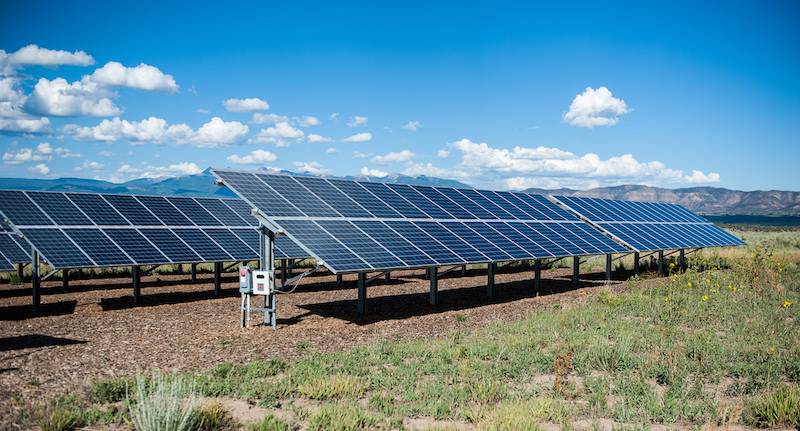Attaining utility-scale renewable power for communities in the Four Corners region has been one of SJCA’s goals for years. Renewable energy is better for both our environment and our wallets; over the past few years the cost of renewables has plummeted while the cost of coal continues to skyrocket. In Colorado, we’ve been engaging with our local electric cooperative, La Plata Electric Association (LPEA), as they navigate their power supply options. Unfortunately, LPEA is stuck in a coal-intensive, long-term energy contract with their power provider, Tri-State, that limits local generation and forces us to pay high rates for dirty, expensive coal-fired power.
Luckily, there are a few avenues to hold Tri- State accountable and pursue cheaper, cleaner power. One such option is the state of Colorado’s roadmap for emissions reduction, which they will be discussing this winter. In 2019, the state legislature passed bold new greenhouse gas reduction goals of 26% from 2005 levels in 2025; 50% by 2030; and 90% by 2050. And the best and fastest way for Colorado to slash emissions is to accelerate the shift away from coal-fired electricity. The electric sector will need an 80% reduction in emissions for Colorado to reach its goals, which means that Tri-State will need to drastically lower their dependence on coal.
Indeed, Tri-State is finally beginning their belated transition towards renewable energy, and recently announced that they plan to cut emissions from Colorado electricity sales 80% by 2030, a goal that puts them on track with Colorado’s emissions reductions goals. For a company that has long resisted the transition to renewable energy, this announcement was huge news.
But even though Tri-State’s new commitments are a step in the right direction, they still have a long way to go. For one thing, Tri-State has not put forward a plan that details how they will reduce their reliance on fossil fuels, and they even have plans for a large expansion into natural gas. Tri-State is committed to coal through 2030, and they plan on still using coal for generation until 2050. Tri-State’s rate forecast also shows a 55% increase by 2050, even though most utilities show flat or even decreasing rates in the years ahead.
As this process unfolds, SJCA will continue to advocate for cleaner, cheaper power by engaging both with our local cooperatives here in Southwest Colorado and in larger statewide processes. We will continue to inform and recruit member-owners to attend and advocate for cleaner, cheaper power at monthly Board meetings. We’ll also keep supporting forward-thinking candidates for our cooperative Boards, mobilizing public comments on clean energy rulemaking processes, and informing the public on what’s going on at their local electric co-op. There’s a long road ahead, but we have an opportunity to secure a brighter, cleaner energy future right here in Southwest Colorado.



